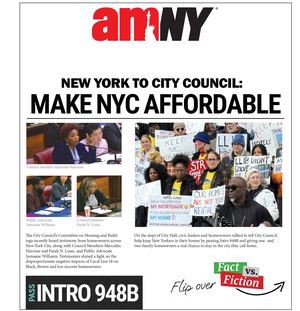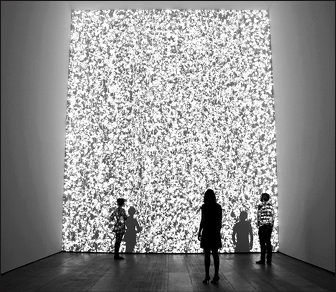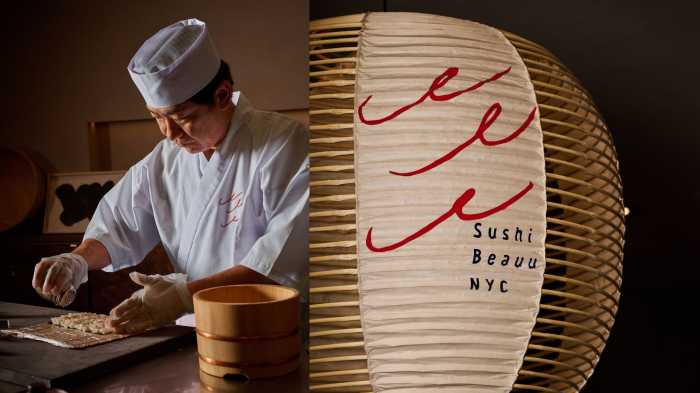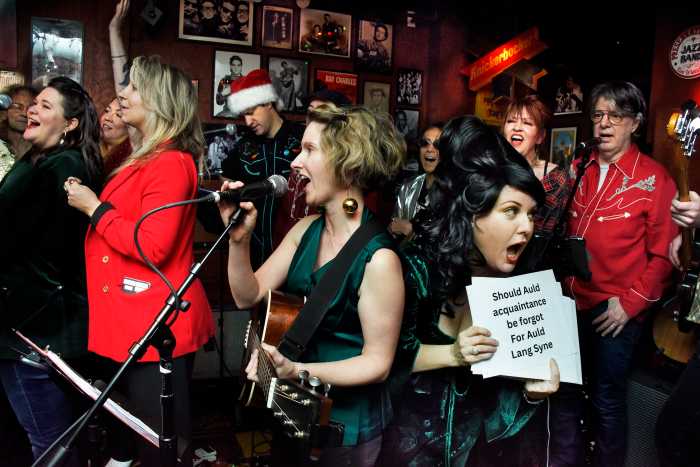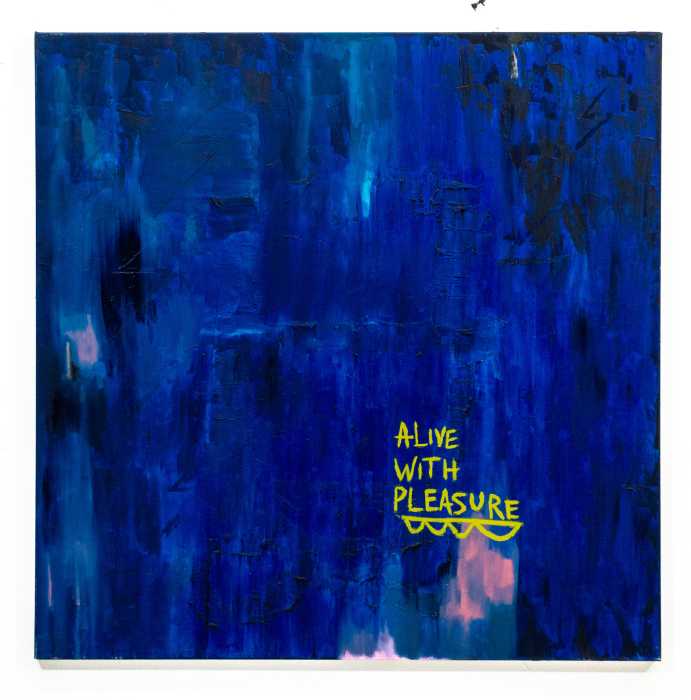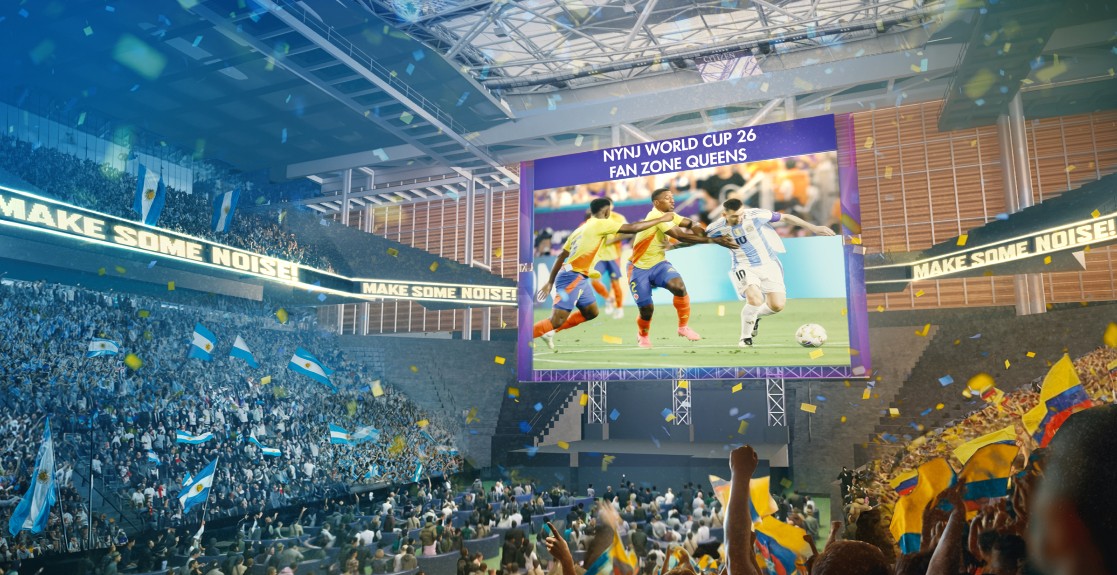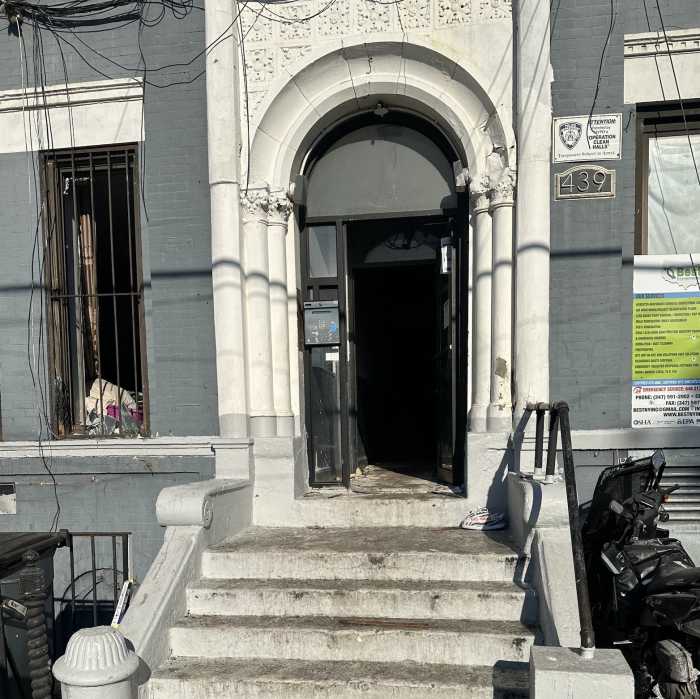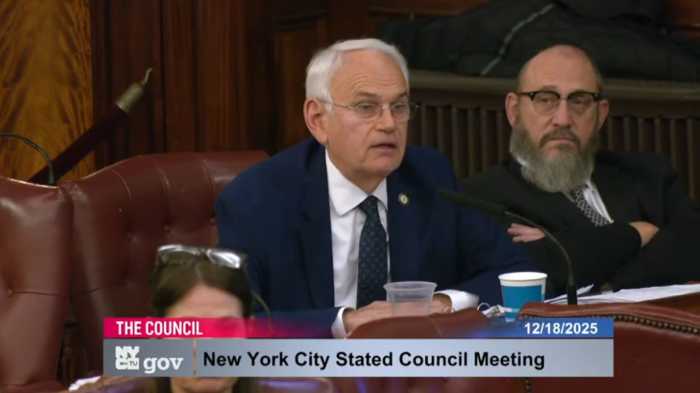By Stephanie Buhmann
New dimensions of digital art and installations
On Sunday, September 7, the Lower East Side was swarming with art enthusiasts. It was the inauguration of the fall season and many of the galleries downtown had coordinated their exhibition openings for that afternoon. While by now, plenty has been written about the developing art scene in this pocket of Manhattan, it might have been that Sunday that truly reflected the creative energy that can be found here these days. While the levels of the artists’ sophistication vary, an overall trend towards contemporary media and installation can be traced. More than a few galleries feature solo exhibitions that fuse different art forms, such as painting, film and sculpture. Experimentation is encouraged here and though most of the spaces are much less generous than elsewhere in the city, they leave the artist more freedom to employ the gallery as a true component within the art dialogue. Lehman Maupin features “Daisy Bell,” digital work by Los-Angeles based artist Jennifer Steinkam, who is known for bestowing a unique sense of painterliness onto the digital medium. One impressive projection, covering the gallery’s entire back wall, evokes the illusion of entering of two-dimensional plane. Made of a seemingly infinite amount of animated flowers, “Daisy Bell” moves with a transfixing rhythm as if seen while a steady breeze would be swooping through a field. The title of the series refers to a specific moment in the history of science and culture in 1962, when Bell Labs used an IBM 704 computer to synthesize speech and recreate the popular 19th-century English song of the same name. This manipulation of human speech and sound through computer technology relates to Steinkamp’s translation of nature into a digitally animated tapestry of floral color and form. In both cases, abstraction is not visual, but lies in the code, which does not need to be deciphered to be enjoyed. In her first solo exhibition with Salon 94, Vidya Gastaldon shows two sculptures and watercolors. Her playful work creates a fantasy world filled with otherworldly creatures. They range from god-like figures to hairy trolls and curious eyeballs that float through mythic landscapes made of translucent color. Born in France and currently residing in Switzerland, Gastaldon is interested in the icons and signs found in different cultures and her works incorporate the occasional symbol derived from Eastern religions or Pop Culture. Meanwhile her sculptures exhibit an element of craft. They are made of fabric and yarn and are knitted or sewn by hand. Employing tactility as a key element, they use fabrics that are soft and plush, while the delicate handiwork, which must require meditative obsessiveness, adds a delicate quality. Gastaldon’s world is one of harmony and surprise, leaving me to guess that the exhibition title, “Do You Wear The Love Glasses?,” is not meant ironically, but as an invitation. We are asked to engage in a pictorial language, which a cynic’s eye could dismiss as trite, but which for others will offer the inspirational opportunities found in fairy tales. At Miguel Abreu Gallery, Iranian-born Raha Raissnia contextualizes a selection of abstract paintings and works on paper with a slide and film projection. Made of ivory black paint atop white gesso, her paintings thrive on the elaborations of contrast and nuance. Strong vertical and horizontal lines dominate the picture plane, like a steel construction seen against a bright sky. The compositions are reminiscent of architectural structures that are seen from aerial perspectives and bring the geometric abstractions of Russian Constructivism to mind. Raissnia’s filmmaking process explores the conventional movement associated with this medium and breaks it up into smaller elements. Here, two slides are projected side-by-side, while slightly overlapping in the middle. In addition, an 18 frame per second film is superimposed over the left image, creating a montage of slow-moving imagery. As in Steinkamp, the projection reveals a strong sense of poetry, but in Raissnia’s case, her images are fragmented and only sparely woven together like arbitrary thoughts popping up from the past. In Kevin Bewersdorf’s “Monuments to the INFOspirit,” presented by V & A Gallery, questions of existentialism are raised in a web forum. A classically trained pianist and web artist, Bewersdorf aims to “construct [his] presence in the spirit world of the web.” He creates marketing products such as brands and identities by using practices that are identical to those employed by major corporations. This entails the creation of stock photography, jingles, logos and video. At V & A, the web works are translated into actual objects. A poster shows different graphic logos found on the Internet, which incorporate the letters A, B, and C and which were selected so that the terms American, Business, and Christian occurred most frequently in the acronyms. To Bewersdorf, artworks in a “gallery space are products that we pretend are not products within a business that we pretend is not a business.” He deals with this problem by presenting the object itself as something mediocre, but the information it conducts is sacred to him. The exhibited objects are ordered from the web and upon arrival are again, documented and loaded up on the web. Through this cycle, Bewersdorf creates a consistent dialogue between virtual and physical realities as the objects refer to the web as much as the web refers to them. Here, reality is no longer reflected by the experience of it by man, but rather by the virtual coverage it receives on the Internet. Having in recent years seen so many major art institutions spend much of their focus on creating comprehensive web sites and exhibition coverage, one cannot help but wonder if in a few years time the physical experience of art will give way to a virtual experience of it. In the meantime, the Lower East Side offers a nice conventional way to see much thought-proving art in the texture of everyday life.
Lehmann Maupin (201 Chrystie St.): Jennifer Steinkamp, “Daisy Bell.” Through 10/18.
Salon 94 Freemans (1 Freeman Alley): Vidya Gastaldon, “do you wear the love glasses?” Through 10/18.
Miguel Abreu Gallery (36 Orchard St.): Raha Raissnia. Through 10/18.
Smith-Stewart (53 Stanton St.): Rashawn Griffin. Through 10/5.
V & A (98 Mott St.). Kevin Bewersdorf, “Monuments to the INFOspirit.” Through 10/12.
